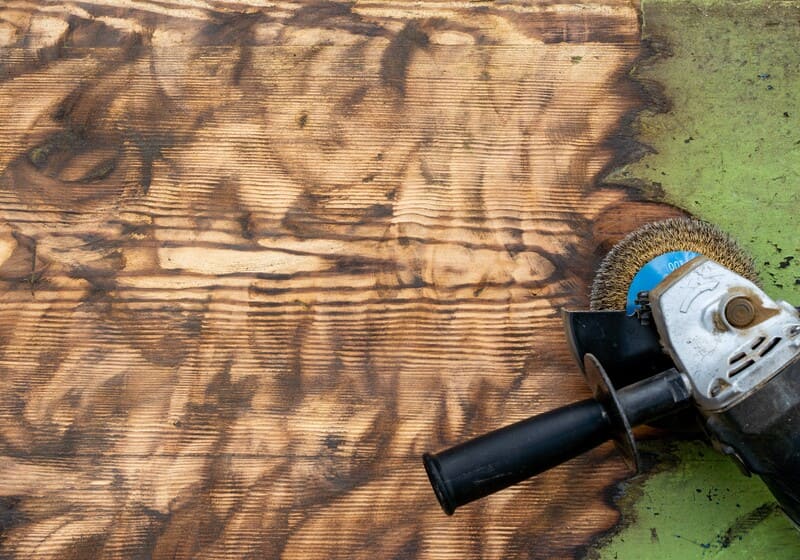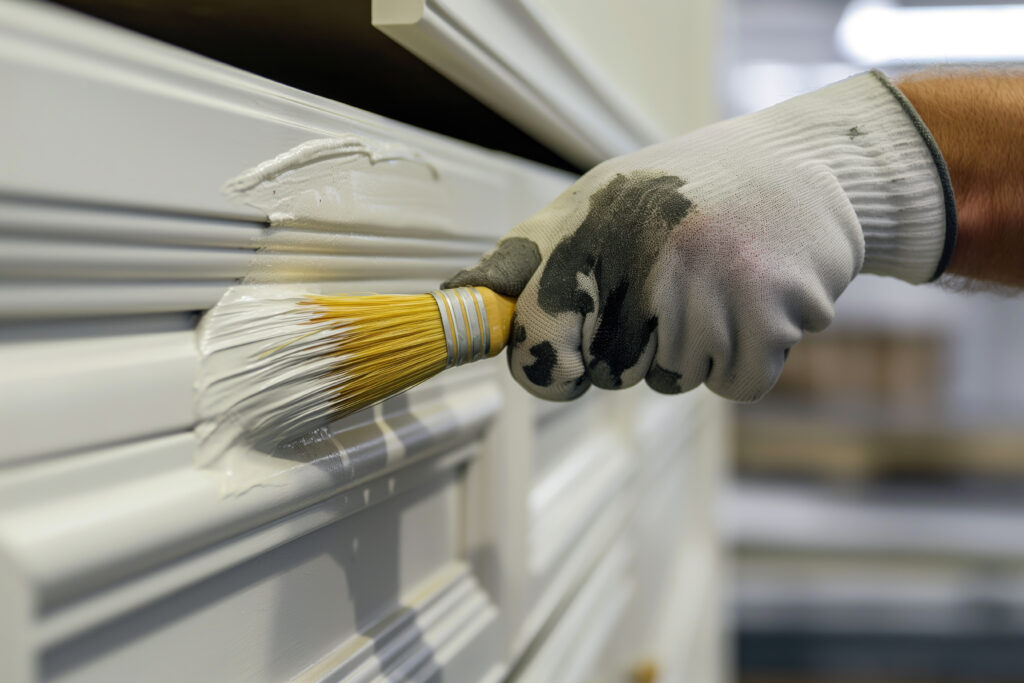You found the perfect piece of wood furniture at your local flea market, but you can’t stand the paint job. It’s rough, splotchy and on top of that it’s an ugly color, but don’t give up on it just yet! Removing paint from wood can be painstaking, but it’s definitely worth it for the results. We’ll show you the best tools and techniques to make the process as easy as possible.
The Tools You Need
Every job is a little bit different, so depending on what item you’re trying to remove paint from, you’ll need a combination of some or all of these items.
A Word on Lead Paint
If you’re working on an older piece, know that the paint you’re removing may be lead-based, which means no sanding. There’s only one way to know for sure whether you’re dealing with lead paint, and that’s by testing it. You can use an at-home test kit (least expensive), mail a sample out to a lab (a bit more expensive), or hire a professional to come in and perform an X-ray fluorescence test (most expensive by far).
If the paint you’re removing contains lead, there are a few things to keep in mind. Use a heat gun or paint stripper to avoid kicking up lead-laced dust, and work over a 6-mil plastic drop sheet extending 10 feet past the item. Once you’re done, dispose of the plastic sheeting in a contractor bag and seal it with duct tape.
What’s the Wood Like Underneath?
Before you start to strip the paint from your furniture, you have to get a good idea of what’s underneath. If you’re looking to remove the paint and varnish the piece instead, you’ll want to know that the wood will look attractive when you’re done. Starting in a hidden spot like a drawer, scrape away the paint layer by layer—if the first layer is paint, chances are the wood isn’t pretty. Attractive wood would usually have been varnished to begin with.
First Method: Sanding
Once you’ve confirmed that you’re not dealing with lead paint, you can start sanding your project with either sandpaper, a sanding block or a power sander. For more delicate work, you’ll want to stick with manual sanding with 80 to 180-grit sandpaper, but if you have a large area to work on with multiple layers of paint to remove, a power sander is your best bet.
Sanding is best used when you’re planning on painting the piece afterward. In this case, it’s not important to remove every last fleck of old paint—you just want to rough the surface up enough so new paint will adhere to it.
Start by cleaning the surface you’re working on with soap and water. After the piece is prepped and dry, start sanding with 180-grit sandpaper until it becomes dull. If you need to tackle thicker paint blobs, switch to a rougher 80-grit paper. Once you’re finished, clean the surface again to remove any dust. If the surface is rough, you can prime the surface and repaint.
Second Method: Stripping
If you want to show off your wood’s natural grain, you’ll have to get rid of all the old paint, which is nearly impossible by sanding alone. In this case you’ll want to use paint stripper. There are many kinds available in varying strengths, but they all come in liquid, gel or paste forms and work by chemical reaction to soften paint, making it easy to scrape away.
After donning your protective gloves, respirator and safety glasses, transfer some paint stripper into a small bowl. Using a paint brush, paint the thinner onto small sections of the piece you’re working on. Make sure to apply thinner evenly to avoid splotchy results. Once the paint starts bubbling, you can use a scraper to easily remove the paint—if any areas of paint remain, repeat the application and scraping process. Once all of the paint has been removed from your piece, clean its surfaces with mineral spirits to remove all traces of thinner. Now your piece is ready to be varnished!
Call National Property Inspections Today
NPI helps you keep your home in its best condition, and can even help you make the most of your investment when you buy or sell with a full home inspection. Find your local inspector to make an appointment.




